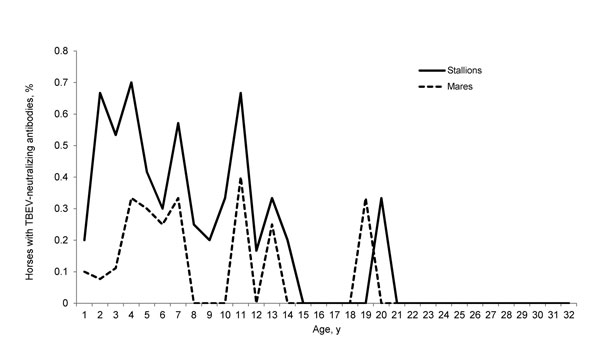Volume 19, Number 4—April 2013
Dispatch
Tick-borne Encephalitis Virus in Horses, Austria, 2011
Figure

Figure. . . Percentages of horses seropositive for tick-borne encephalitis virus (TBEV) by age and sex, Austria, 2011. Geldings were excluded for better illustration. The difference between groups was significant for young age (p<0.001) and male sex (p = 0.001).
Page created: March 13, 2013
Page updated: March 13, 2013
Page reviewed: March 13, 2013
The conclusions, findings, and opinions expressed by authors contributing to this journal do not necessarily reflect the official position of the U.S. Department of Health and Human Services, the Public Health Service, the Centers for Disease Control and Prevention, or the authors' affiliated institutions. Use of trade names is for identification only and does not imply endorsement by any of the groups named above.